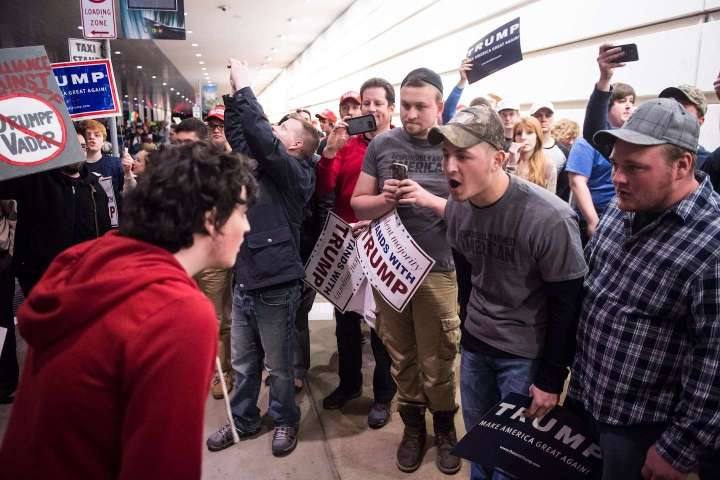We are at one of those moments where it’s worth stepping back and considering the state of things though the lens of recent history. Ten years ago, the defeat of Mitt Romney by Barack Obama prompted reflection within the Republican establishment about its appeal. Now, Romney regularly sides with Democrats in opposition to the right-wing president who succeeded Obama — including on that president’s effort to retain power despite losing his bid for reelection.
A new way to visualize America’s surge in partisan hostility

What seemed — often misleadingly — as a fairly standard partisan tension in 2012 has now become a focus of regular articles speculating about civil war or, at least, a rise in political violence. Americans from either political party view the other side with increasing hostility. A former defense secretary who served under Donald Trump recently said that “extreme partisanship” was the biggest threat the nation faces.
Newly published data from a regular national survey shows exactly how that divide has widened.
At the time of each presidential election, the American National Election Studies (ANES), run by Stanford University and the University of Michigan, asks Americans about their political views. The research has been conducted for decades, with researchers asking the same or similar questions during each cycle. The result is a pool of data that offers unique insight into how Americans’ political views have changed in recent decades.
Last week, ANES published a page compiling how key trends have evolved. Those data make it easy to see the widening political gulf.
Consider how people identify their own ideologies. Since the 1960s, Republicans have been much more likely to identify themselves as conservative than anything else. Democrats were about as likely to identify themselves as liberal as they were to say they were moderate. But that changed in about 1994, at which point Democratic self-identification as liberal began to rise.
Since 2004, it has skyrocketed — as identification as “conservative” has plunged. Republican identification as “conservative,” meanwhile, has continued to rise.
I’ve broken out racial groups there because of the interesting divide between White Democrats and Black or Hispanic members of the party. The recent surge in Democratic self-identification as liberal is heavily a function of Whites in the party (as I’ve noted before).
(Two notes: First, there weren’t enough Black or Hispanic independents to have data before about a decade ago. Second, there still aren’t enough Black Republicans to break the group out.)
What this tells us, though, is that Democrats (mostly White Democrats) now see themselves more to the left than in the middle. That is, closer to the ideological pole.
We can view that, too, by considering how members of each party view those ideological groups. The ANES has a “feeling thermometer” in which respondents are asked to evaluate how warmly they view a group or subject. A score of 100 is a very warm feeling.
In recent years, views of the opposing ideology have plunged among partisans. In 1994, Democrats were only 4 degrees more favorable to “liberal” than “conservative.” In 2020, the gap was 28 points — again driven heavily by White Democrats. The shift in the gap among Republicans was more modest, but only because it has been so wide for decades. But you can see that, since 2004, there’s been a plunge in how Republicans see “liberal.”
Over this period, of course, we’ve also seen partisanship change in Congress. Evaluations of voting patterns conducted by the academic team at Voteview shows how the average ideology of caucuses in both chambers of Congress have moved to the poles since 1963 (roughly the period at which the ANES data shown in this article begins). That movement, as you’ve probably heard, has been much larger among Republican members of Congress.
There’s been another shift since 2004 that is worth mentioning. A common trope several decades ago was that the Democratic and Republican parties were functionally indistinguishable, with each holding only slightly different views on key subjects. That sense (always more common among independents) has fallen. Now, most partisans and three-quarters of independents say that there is a real difference between the parties.
This sits alongside other amplifications, like that partisans increasingly identify as strongly partisan.
Now we add it all together. Americans, particularly members of partisan groups, are more likely to embrace the ideological poles, less likely to have positive views of the pole opposite their own, increasingly see the choice between Democrat and Republican as important and are more likely to identify themselves as strongly partisan in their views.
The result? A nation in which the political poles have grown more crowded and more hostile to those on the other side.






